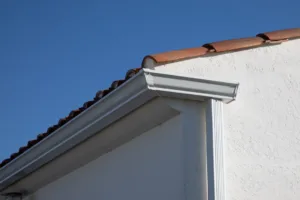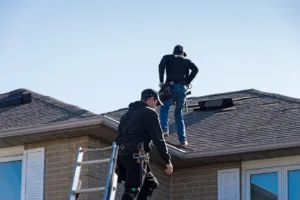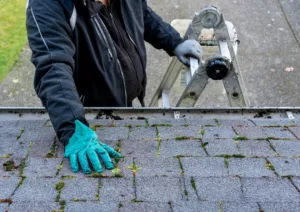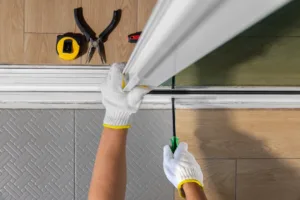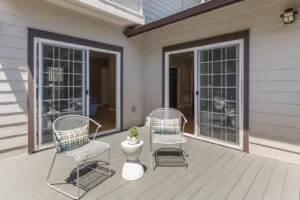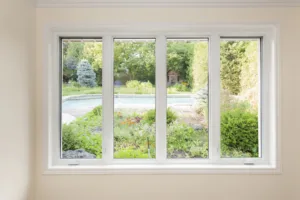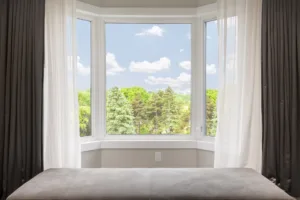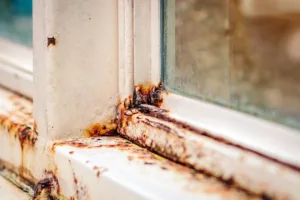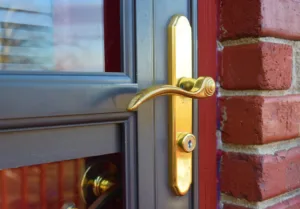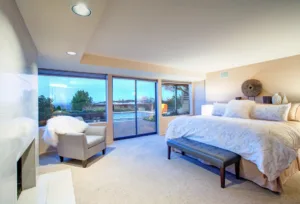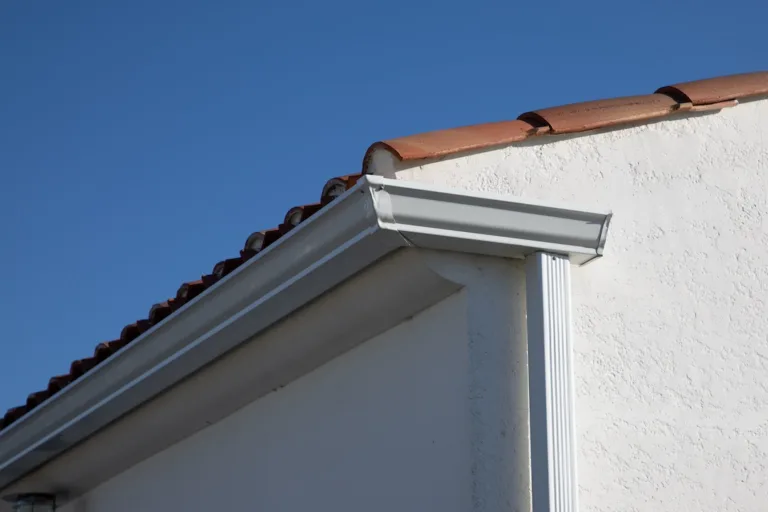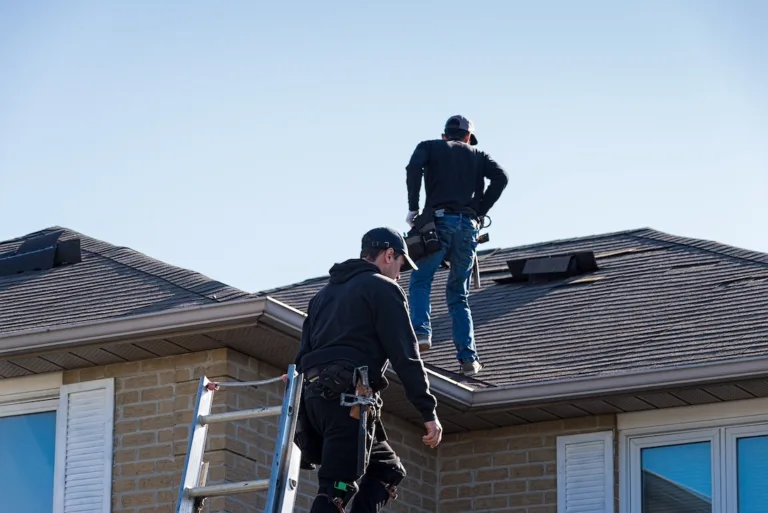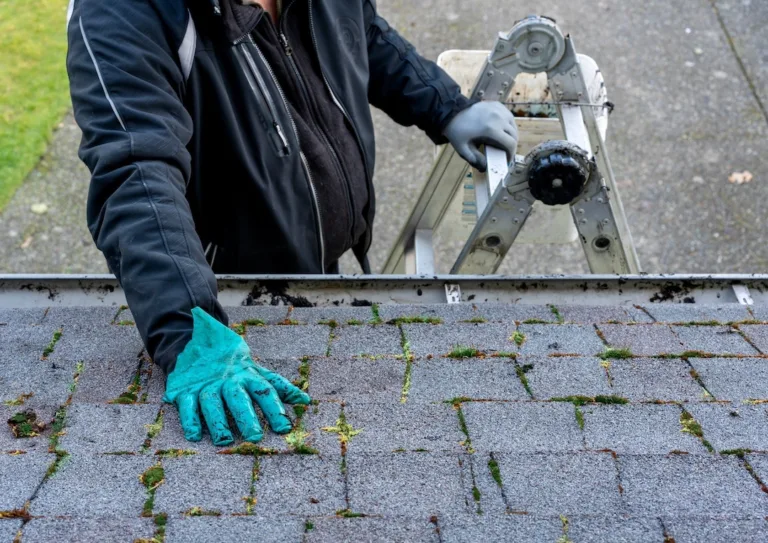Hey there, homeowners and home improvement lovers! Today, we’re setting our sights just a tad higher than usual—up to where your home meets the sky. Yup, we’re talking about gutters.
Gutters are unsung heroes in protecting your place from the temperamental moods of Mother Nature.
From ensuring that rainwater says “goodbye” to your foundation to keeping your basements dry and your exteriors spick and span, gutters do it all. But not all gutters are created equal, and that’s precisely what we’re here to chat about today.
Traditional K-Style Gutters

First off, we have the traditional K-style gutters. These gutters are the popular kids on the block and for good reason. With their distinctive crown molding-like appearance, they not only do the heavy lifting when it rains but also add an aesthetic touch to your home’s exterior.
K-Style Gutter Benefits
- Simple and Efficient: They have a smooth interior that lessens the chances for debris accumulation, making maintenance a breezier affair.
- Aesthetic Throwback: Their round shape offers a distinctive old-world charm that complements historic homes beautifully.
Drawbacks and Pitfalls of K-Style Gutters
- Difficult Maintenance: The same qualities that add to their visual appeal can make maintenance and repairs more troublesome. The crevices and corners of K-style gutters can be difficult to clean thoroughly, potentially leading to unexpected maintenance issues.
- Corrosion Risks: Depending on the material, K-style gutters, especially those made from galvanized steel or aluminum, may be prone to corrosion over time. This risk requires homeowners to be vigilant for signs of wear and tear to avoid leaks and structural damage.
Half-Round Gutters

Taking a step back into the halls of history, half-round gutters offer a classic look that’s hard to beat. Think of them as the elegant grandparent of the gutter world.
Half-Round Gutter Benefits
- Simple and Efficient: They have a smooth interior that lessens the chances for debris accumulation, making maintenance a breezier affair.
- Aesthetic Throwback: Their round shape offers a distinctive old-world charm that complements historic homes beautifully.
Cons and Pitfalls Of Half-Round Gutters
- Cost: Half-round gutters are typically more expensive than their K-style counterparts. This is due to their specialized shape and the materials often used in their construction.
- Installation Complexities: They require more skill to install correctly, mainly because of their round shape and the need for specialized brackets. This can lead to higher labor costs for installation.
- Limited Capacity: While aesthetically pleasing, they don’t hold as much water as K-style gutters, potentially making them less effective in areas with heavy rainfall.
Seamless Gutters
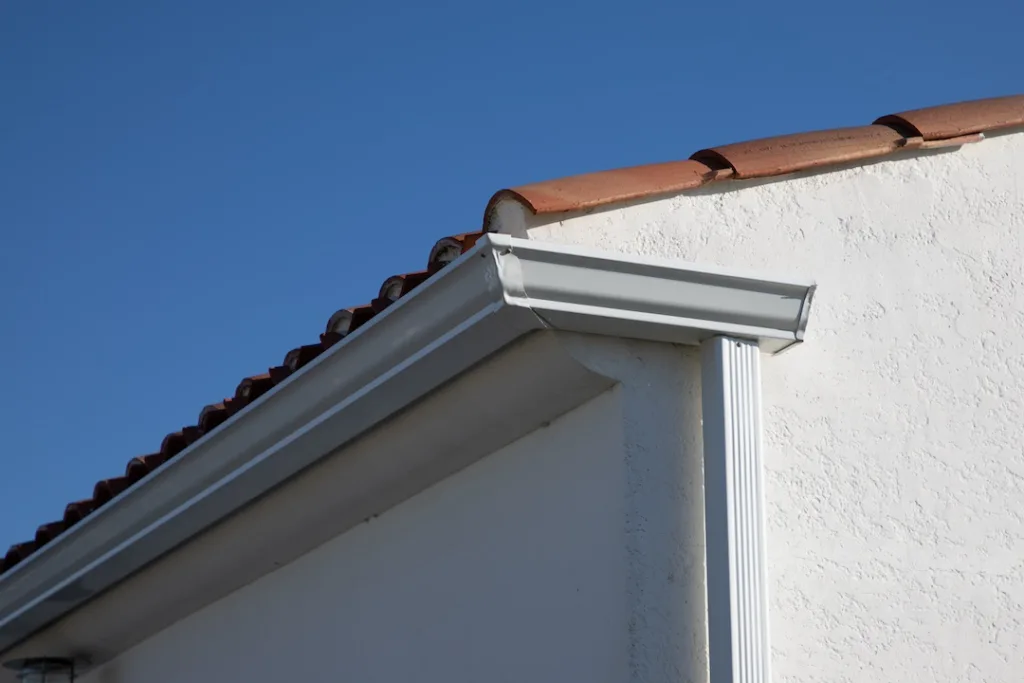
Now, for a touch of modern innovation, we have seamless gutters. These are the James Bonds of the gutter world—sleek, efficient, and with significantly less drama (leaks).
Seamless gutters are custom-fitted gutter systems made onsite to perfectly match the dimensions of your home. Unlike traditional gutters that come in sections and need to be joined together, creating potential leak points, seamless gutters are formed from a single piece of material. This process involves a gutter-forming machine that fabricates your gutters right in your driveway, ensuring a perfect fit and eliminating the seams where leaks most often occur.
Benefits Of Seamless Gutters
- Custom-Fit: They’re crafted right on the installation site to fit your home to a T, minimizing leaks.
- Low Maintenance: The lack of seams means there are fewer places for debris to latch onto, which equates to less cleaning for you.
Drawbacks and Pitfalls of Seamless Gutters
- Initial Cost: One of the most significant disadvantages of seamless gutters is the cost. Due to their custom fabrication and the equipment required for installation, seamless gutters can be more expensive initially than traditional sectioned gutters.
- Professional Installation Required: Installing seamless gutters isn’t a DIY job. It requires specialized machinery to create the gutters on-site, meaning you’ll need to hire professionals. This not only increases the cost but also means you have to find a reliable contractor.
- Difficult to Repair: Because seamless gutters are formed from one long piece of material, any damage requiring repair can be more complicated. In some cases, a significant portion of the gutter may need to be replaced, leading to higher maintenance costs.
As Always, Materials Matter
Alright, so we’ve covered styles, but what about the material? This choice is crucial, as it will impact the durability, maintenance, and price of your gutters.
- Aluminum: Lightweight, rust-resistant, and wallet-friendly, aluminum gutters are a solid choice for most homeowners.
- Copper: For those looking to add a touch of sophistication and are not shy about investment, copper gutters age beautifully, developing a stunning patina over time.
- Steel: If you live in an area that sees heavy snow or rain, steel gutters, though heavier and more prone to rust, can take a beating from the elements.
Wrapping Up
Picking the right gutter for your home isn’t just about functionality—it’s also about complementing your home’s style and making sure it stands the test of time and weather. Whether you lean towards the classic elegance of half-round gutters, the popular appeal of K-style, or the innovative allure of seamless options, there’s a gutter out there waiting to elevate your home’s exteriors.

